Deep-fried turkey is an excellent centerpiece for any family holiday. But how long does it take to deep fry this all-American bird? We've done the research, and here's the answer:
When deep frying whole turkey, fry it for 3 to 4 minutes per pound. For turkey breasts, fry them for 3 to 4 minutes per pound plus 5 more minutes at the end.
Turkey white meat should reach an internal temperature of 165º Fahrenheit to ensure food safety without drying out the meat. Dark meat can be cooked to a higher temperature without drying out, around 175º Fahrenheit.
In this article, we'll cover how long to deep fry turkeys of different sizes. We'll also see what kind of and how much oil to use, how to break down a turkey, how to brine a turkey, and some essential safety tips. Read on to learn more!
![A turkey slowly gets lowered into a large pot of hot peanut oil for frying - How Long to Fry a Turkey? [Per Pound]](https://kitchenseer.com/wp-content/uploads/2022/05/A-turkey-slowly-gets-lowered-into-a-large-pot-of-hot-peanut-oil-for-frying-How-Long-to-Fry-a-Turkey-Per-Pound.png)
How long does it take to deep fry a turkey?
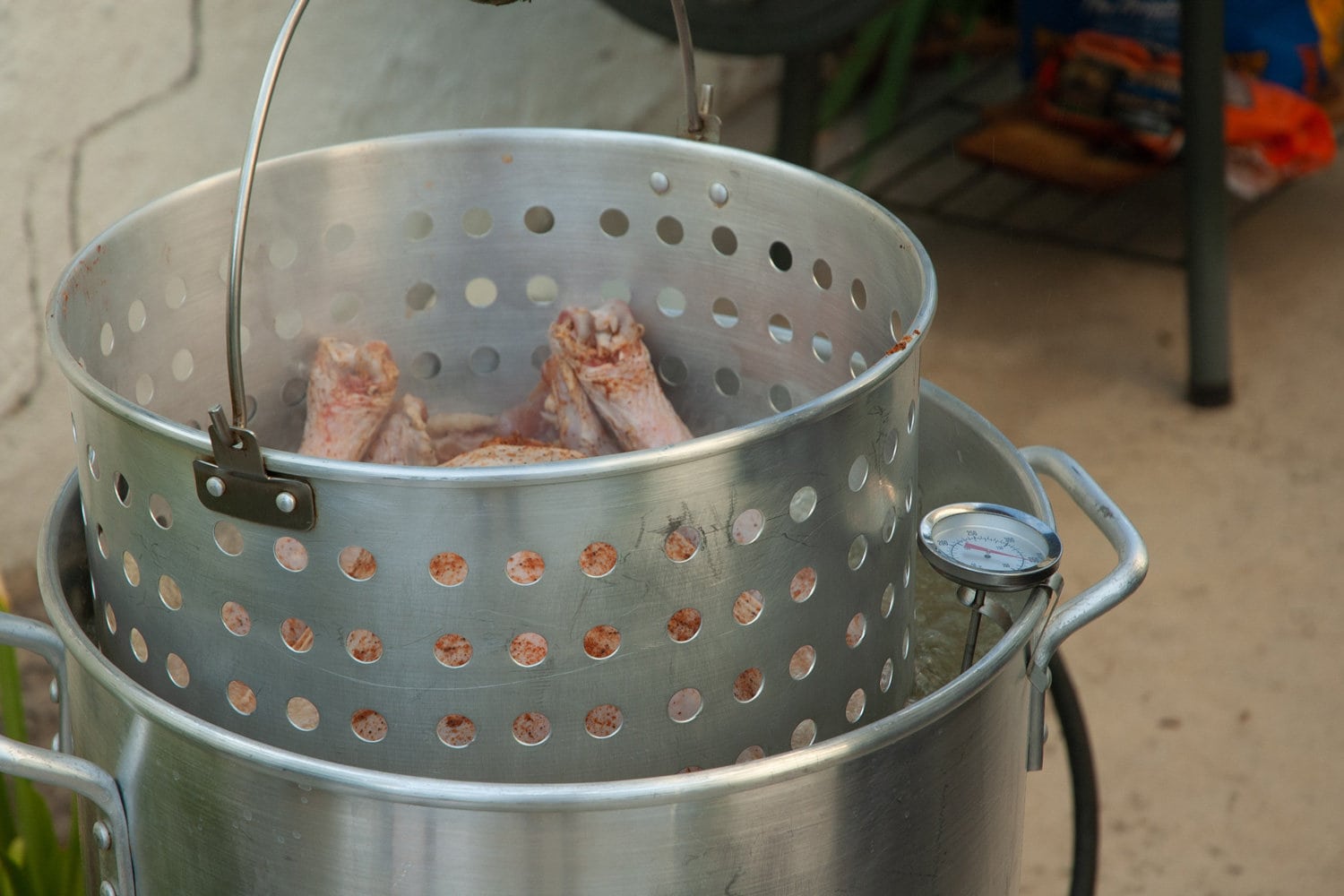
Deep frying a turkey is one of the fastest methods to cook a whole bird. The amount of time it will take depends primarily on the size of your bird.
With your frying oil at 350º Fahrenheit, it will take 3 to 4 minutes per pound. The average turkey weighs around 15 pounds, meaning it will take 45 to 60 minutes to fry.
Of course, turkeys come in a variety of sizes. You can do the math yourself, but we've put together some of the most common weights here:
- 10 pounds: 30 to 40 minutes
- 11 pounds: 33 to 44 minutes
- 12 pounds: 36 to 48 minutes
- 13 pounds: 39 to 52 minutes
- 14 pounds: 42 to 56 minutes
- 15 pounds: 45 to 60 minutes
- 16 pounds: 48 to 64 minutes
- 17 pounds: 51 to 68 minutes
- 18 pounds: 54 to 72 minutes
- 19 pounds: 57 to 76 minutes
- 20 pounds: 60 to 80 minutes
What temperature should you deep fry turkey?
The ideal temperature for deep frying turkey is 350º Fahrenheit. At this temperature, you can cook the turkey all the way through without the outside getting overdone before the center cooks.
However, you will want to heat your oil beyond 350º before you put your turkey in the pot. But why is this?
Turkeys are large and have a lot of thermal mass. This means that the temperature of the oil will drop dramatically when you lower the turkey into it. It's not unusual for the oil to lower as much as 50º Fahrenheit.
For this reason, we recommend heating up your oil to 375º Fahrenheit before you put the turkey in the oil. Afterward, try to keep you oil at 350º Fahrenheit for the rest of the cooking time.
What oil to use for deep frying turkey?
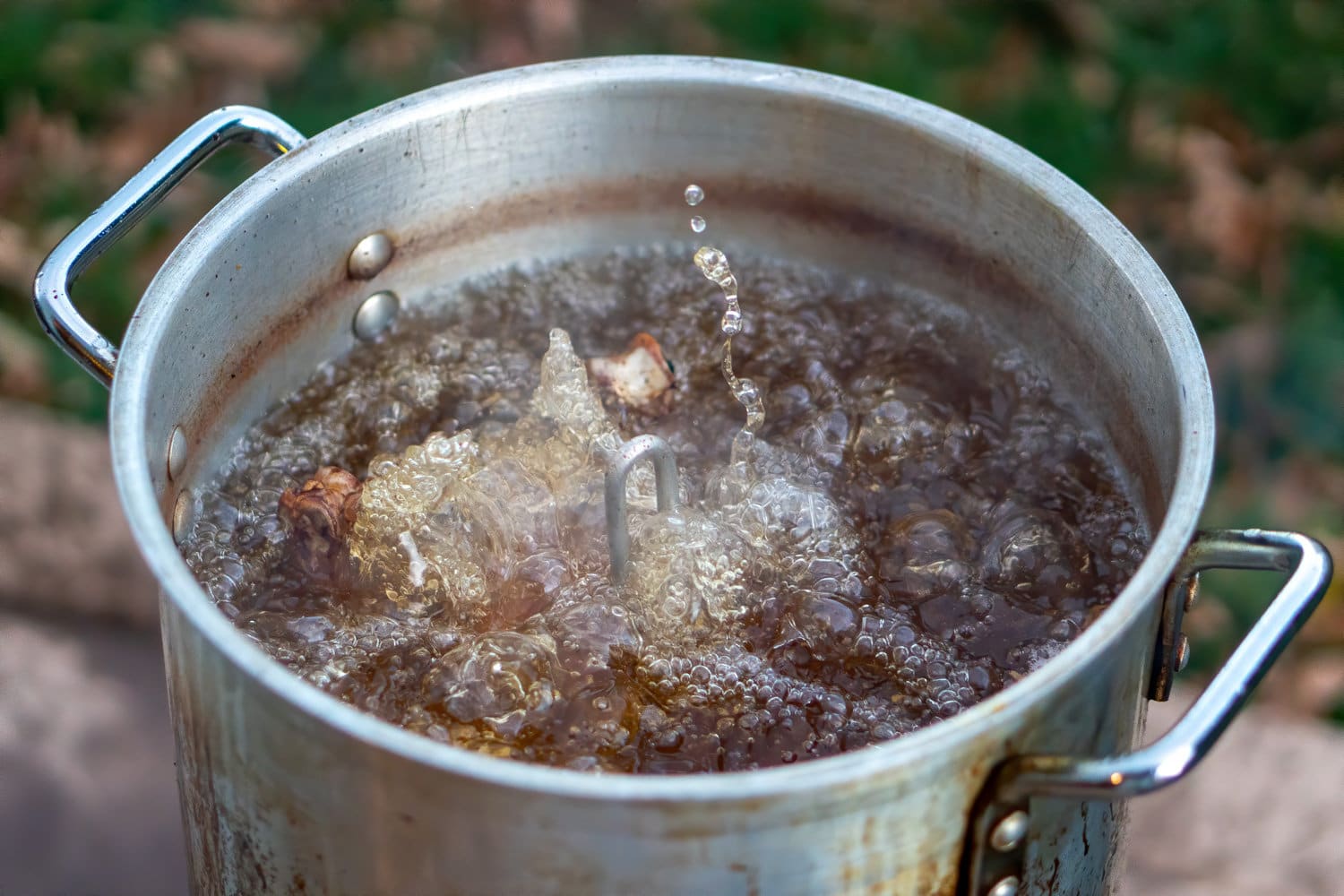
You need an oil with a high smoke point for deep frying turkey. Not only will you be deep frying at high temperatures, but you will be maintaining those temperatures for a long period of time.
Because of this, oils with lower smoke points are likely to burn. They may start to smoke or taste off.
For this reason, peanut oil is a popular choice for many. Peanut oil has a smoking point of 450º Fahrenheit, so it can remain stable and safe at the temperature you deep fry turkey.
Soybean and safflower oil are also great choices. They have the same 450º-degree smoke point as peanut oil. They are also safe to consume for individuals with a peanut allergy, making them a great choice.
If you're looking to save a bit of money, you may be tempted to go with canola oil. Canola oil has a smoke point of 435º degrees Fahrenheit, which is close to that of the other oils we've mentioned. It's often cheaper than the other oils we've mentioned too.
However, with peanut oil, you will be able to reuse it several times. With canola oil, you may notice the flavor starts to go off after a couple of uses. Because of this, peanut oil can save you money in the long run if you plan on deep frying often.
How much oil do you need to deep fry a turkey?
For deep-frying a turkey, you need to make sure you have enough oil to completely cover the bird. However, you don't want to have so much oil that it spills out over your pot. Any oil spillage can be very dangerous, especially if you are cooking in a gas turkey fryer.
Most turkey fryers come in two sizes: 30 quarts and 32 quarts. For birds up to 15 pounds, a 30-quart, like the one below, turkey fryer will be plenty. You will need 3 to 4 gallons of oil for a bird this size.
Click here to see this 30-quart deep-fryer on Amazon.
For birds over 15 pounds, you have a couple of choices. You can fry the bird whole, or you can break it up into pieces.
If you fry it whole, you may want to opt for a 32-quart turkey fryer. You should use 5 to 6 gallons of oil for these birds.
If you divide the turkey into pieces, a 30-quart turkey fryer should still offer you enough volume.
Should you fry a turkey whole or break it down into pieces?
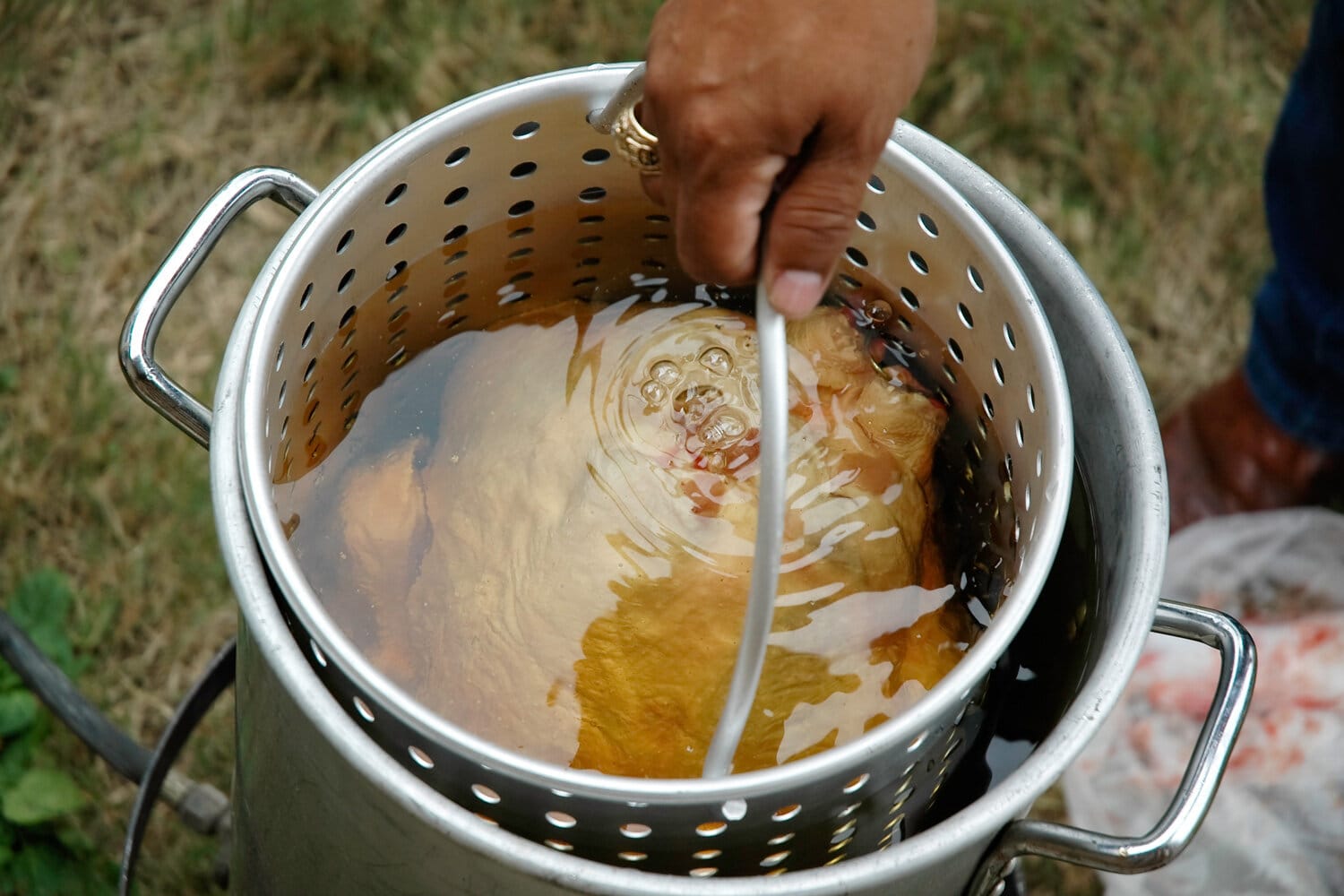
A whole turkey makes a classic and fantastic centerpiece. It's the sort of Norman Rockwell image that many people picture when they think about Thanksgiving or other holidays.
However, it's not always practical. Keeping a bird whole has its problems, the most notorious of which is dryness in the white meat.
This is less of a problem with deep frying, especially when using a smaller bird. Turkeys up to 15 pounds can be deep-fried whole without too much risk of drying out the tempermental white meat.
For larger birds, though, you may find that you get better results by dividing it up first. This way you can cook each part to perfection.
How to break down a turkey
If you buy a fresh turkey, your butcher may be willing to break it down for you. However, this isn't an option for those who buy a frozen turkey, as you'll need to let the turkey thaw before butchering it.
Breaking down a turkey may seem intimidating for the uninitiated, but with a little know-how it's a fairly easy process. Just follow these steps:
- Make sure the turkey is completely thawed before butchering it
- Remove any twine or wire holding the turkey's limbs
- Remove the neck and giblets (if present) from the turkey cavity
- With the turkey on its belly, remove the wings
- Grab one wing and pull it away from the body
- Cut through the skin toward the joint where the wing connects with the body
- Pull the wing up and out to dislocate the joint
- Run your knife through the joint, avoiding any bones
- Repeat for the other wing
- With the bird on its back, remove the thighs and legs
- Cut through the skin between the thigh and the body
- Push the thigh to pop the thigh bone out of the hip socket
- Run the knife between the thigh and the body, along the backbone of the turkey
- Continue until you have removed the thigh
- Repeat with the other thigh and leg
- Remove the turkey breast
- Hold the body verticle on the cutting board by the bottom of the backbone
- Cut down, close to the backbone, with a sturdy chef's knife until you reach the neckbone
- Pull the breast bone and the backbone away from each other to pop out the neck bone
- Cut around the joint of the neckbone to remove the back from the breast
- You should now have a separated breast bone with two breasts
- You can use this as is or cut the breasts off of the bone by running a knife along the bone while pulling the breast away
To better visualize each step, check out the video below:
Should you brine deep-fried turkey?
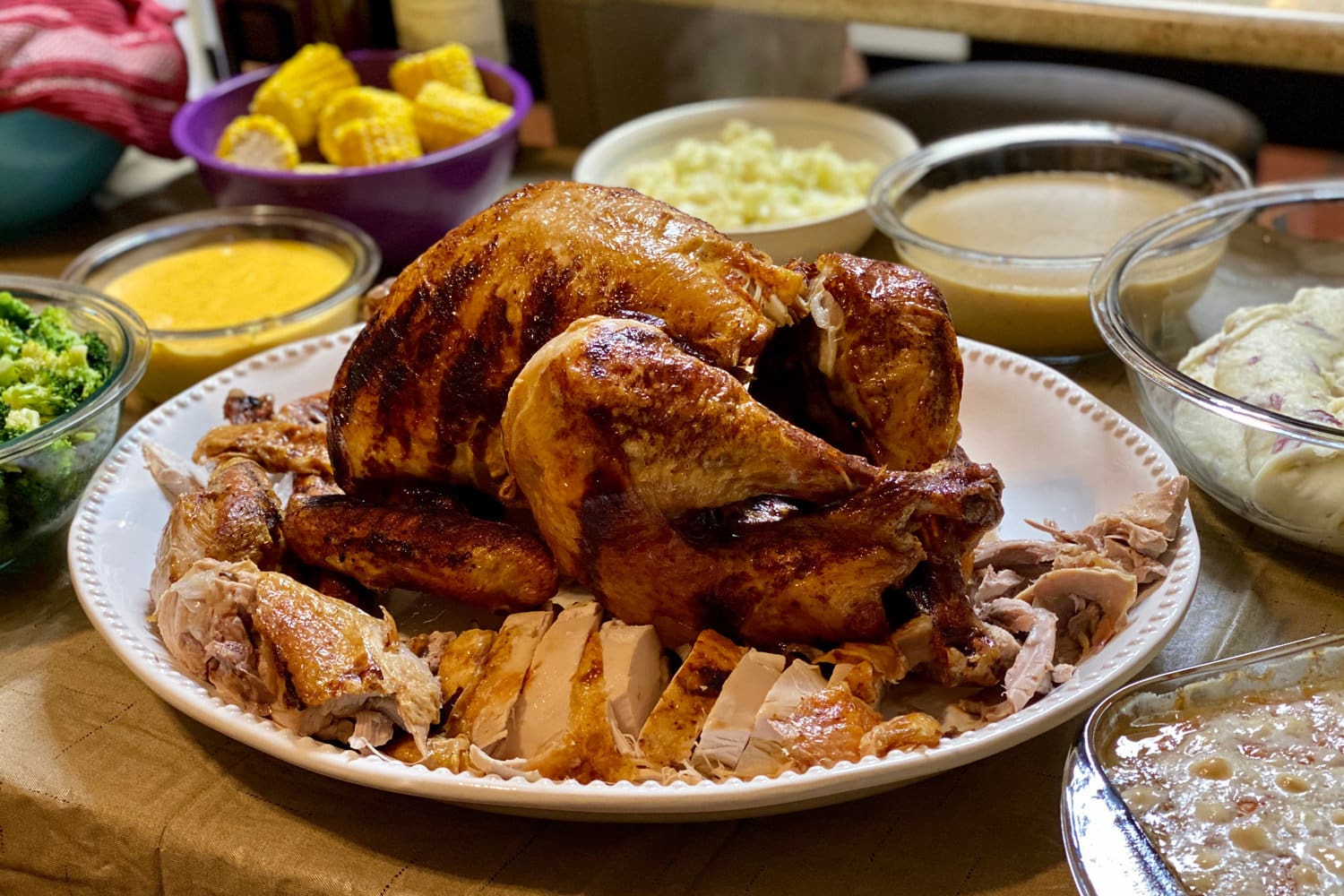
Breaking down a turkey isn't the only way to help keep it moist. One common method attested to by many is the brine.
Brining a turkey means keeping it in a salt solution so that the meat absorbs some of the salt. This accomplishes several things that help keep the meat moist, tender, and tasty.
As the salt is absorbed by the meat, it will naturally season the meat throughout. This means each bite will be nicely seasoned.
The salty meat will also be better able to retain moister in cooking. This gives you a little more leeway with the cooking temperature to keep your meat moist.
The salt will also cause some of the proteins to denature. This might not sound good, but it is. The meat will feel less fibrous and more succulent because of this process.
You can also add more flavor to your bird this way. Instead of just using salt, you can add some other flavors and spices when brining your turkey.
Of course, it's not necessary to brine a turkey, but you may find you get better results when you do.
Safety tips for deep frying turkey
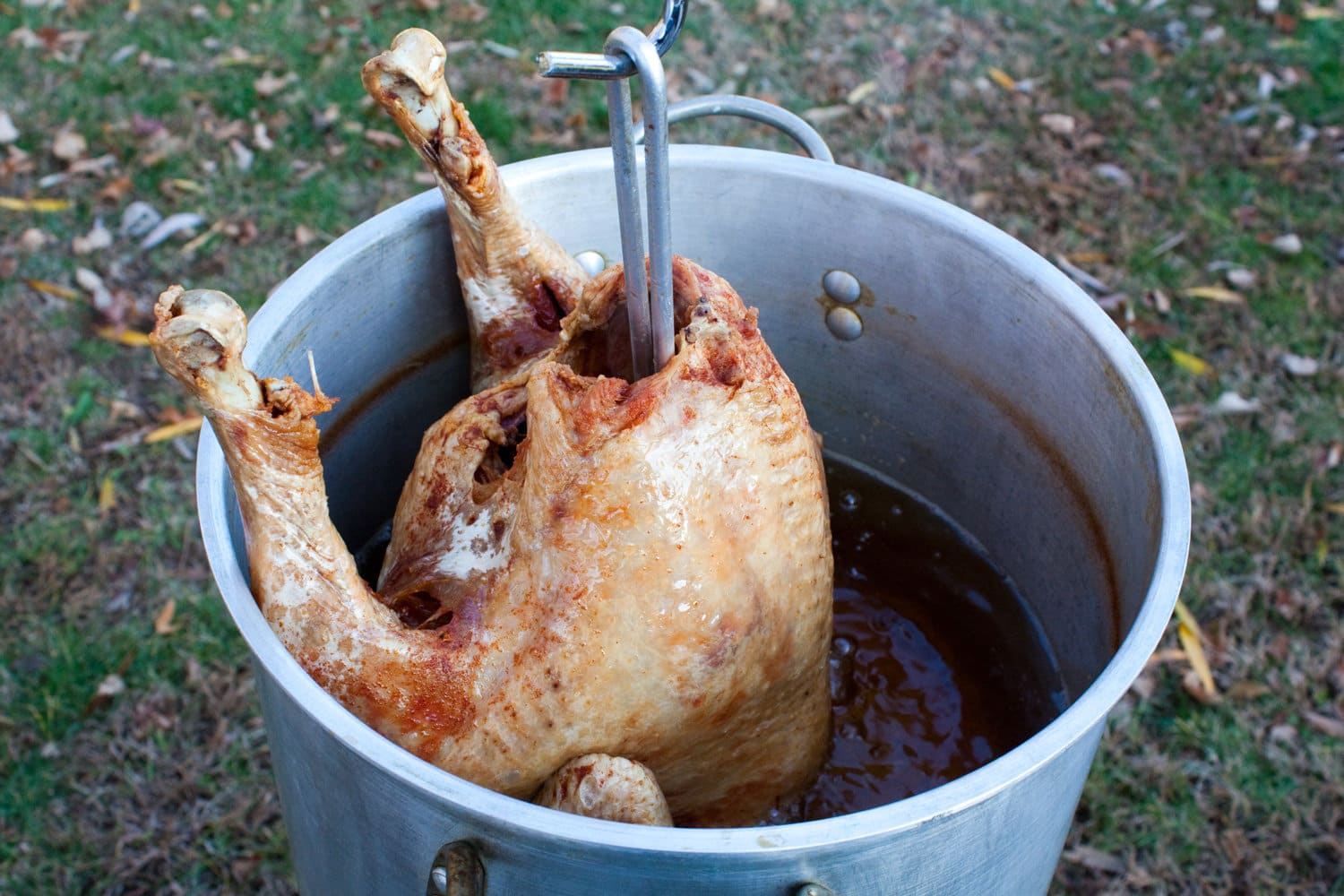
Deep-fried turkey makes an amazing and delicious main for special occasions, but it can be dangerous too. Don't let disaster ruin your deep-fried get together by following some simple safety precautions:
- Nevery deep fry whole turkey inside
- Make sure you do not overfill your turkey fryer
- Keep children and pets away from the deep fryer
- Lower turkey into the oil slowly
- Keep an eye on your deep fryer the whole time
- Always make sure your turkey is completely thawed before deep frying
This last precaution is extremely important. Frozen turkey in a deep fryer is a recipe for catastrophe and nothing else.
This has become such a problem that safety officials and news outlets have put out videos to warn consumers. See the frightful fireworks for yourself in the video below:
Final Thoughts
You now know how long it takes to deep fry a turkey and how to do so safely. We've even seen some techniques to make sure your bird turns out perfectly cooked all over, whatever the size.
If you found this article helpful, be sure to check out these great posts:
What's the Best Oil to Deep Fry Turkey?
Turkey Fryer Not Heating Up - What to Do?

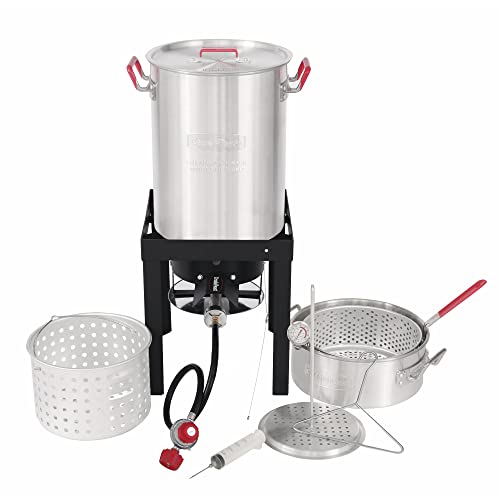
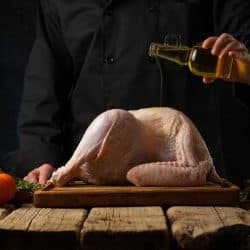
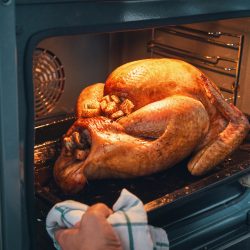

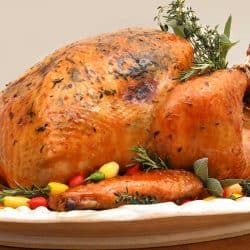
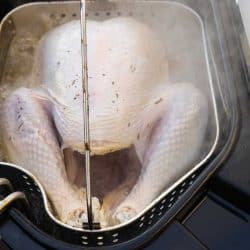
![Fresh Raw Turkey Ready to be Prepared for Holidays, How Long Will A Turkey Last In The Freezer? [Everything You Need To Know!]](https://kitchenseer.com/wp-content/uploads/2021/11/Fresh-Raw-Turkey-Ready-to-be-Prepared-for-Holidays-250x250.jpg)